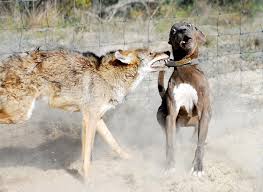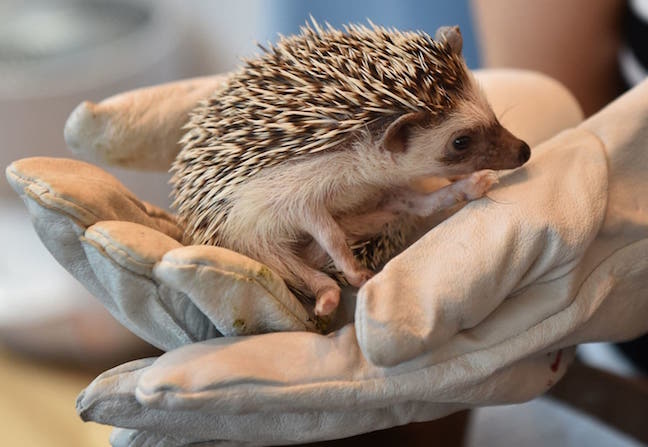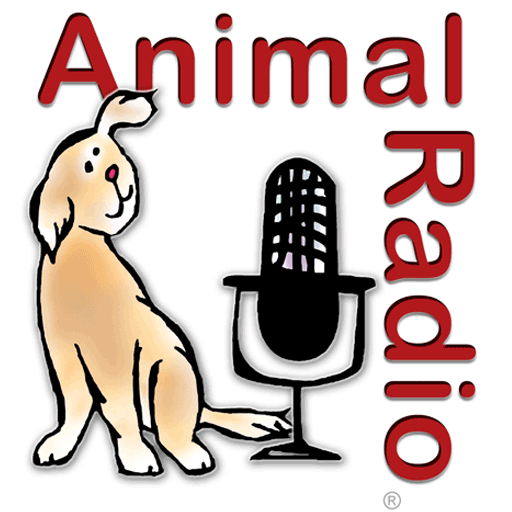How To Make Your Dog Laugh (Really!)
Stanley Coren, PhD
 Dogs are capable of laughing and they typically do so when they are playing. Canine laughter begins with the doggy equivalent of smiling but also includes a sound that is much like panting. Animal behaviorist Patricia Simonet recorded those sounds while dogs played. On analyzing the recordings, she found that they involved a broader range of frequencies than regular dog panting.
Dogs are capable of laughing and they typically do so when they are playing. Canine laughter begins with the doggy equivalent of smiling but also includes a sound that is much like panting. Animal behaviorist Patricia Simonet recorded those sounds while dogs played. On analyzing the recordings, she found that they involved a broader range of frequencies than regular dog panting.
Do Dogs Smile?
In the minds of most people, the equivalent of a dog smiling is when he is wagging his tail. But there is actually one canine facial expression that comes close to what we mean by smiling in humans. In this expression, slightly opened jaws reveal the dog's tongue lapping out over his front teeth. Frequently the eyes take on a teardrop shape at the same time, as if being pulled upward slightly at the outer corners. It is a casual expression that is usually seen when the dog is relaxed, playing, or interacting socially, especially with people. The moment any anxiety or stress is introduced, the dog's mouth closes and you can no longer see the tongue.
Dogs are also capable of laughing, and they typically do so when they are playing. Canine laughter begins with the doggy equivalent of smiling but also includes a sound that is much like panting. Several years ago, animal behaviorist Patricia Simonet at Sierra Nevada College by Lake Tahoe recorded those sounds while dogs played. On analyzing the recordings, she found that they involved a broader range of frequencies than regular dog panting. In one experiment, Simonet noticed that puppies romped for joy when they heard recordings of these sounds; in another, she was able to show that these same sounds helped to calm dogs in an animal shelter.
How To Make Your Dog Laugh
 Humans can imitate sounds of dog laughter, but it takes conscious monitoring of mouth shape to get the sound pattern right. Producing dog laughter correctly can make your dog sit up, wag his tail, approach you from across the room, and even laugh along.
Humans can imitate sounds of dog laughter, but it takes conscious monitoring of mouth shape to get the sound pattern right. Producing dog laughter correctly can make your dog sit up, wag his tail, approach you from across the room, and even laugh along.
1. Round your lips slightly to make a "hhuh" sound. Note: The sound has to be breathy with no actual voicing, meaning that if you touch your throat while making this sound, you should not feel any vibration.
2. Use an open-mouthed smiling expression to make a "hhah" sound. Again, breathe the sound; do not voice it.
3. Combine steps one and two to create canine laughter. It should sound like "hhuh-hhah-hhuh-hhah."
Perhaps the most common misinterpretation of dog behavior is based on the myth that a dog wagging his tail is happy and friendly. Although some tail wags are associated with happiness, others can signal fear or even the warning that you are about to be bitten.
The tail's position, specifically the height at which it is held, serves as an emotional meter. If the tail is held at a middle height, the dog is relaxed. As the tail position moves up, it is a sign that the dog is becoming more threatening, with a vertical tail being a clearly dominant signal meaning, "I'm boss around here."
Similarly, barks say a lot about what your dog is thinking. Low-pitched sounds (growls) make the animal seem large and dangerous; they usually indicate anger and the possibility of aggression. High-pitched sounds mean the opposite, a request to be allowed to come closer or a signal from a large dog saying, "It's safe to approach."
Visit Website
Devoting Her Fame To The Animals
Katie Cleary, Peace 4 Animals
 Katie Cleary is a Model, Actress, Philanthropist and Filmmaker who got her start in the entertainment business on the hit TV show America's Next Top Model. After graduating college, Katie landed the role on NBC's hit game show Deal or no Deal. Katie's main passion is advocating animal welfare issues while rescuing and rehabilitating animals and lovingly finding them forever homes. She tells us about her 12 pets.
Katie Cleary is a Model, Actress, Philanthropist and Filmmaker who got her start in the entertainment business on the hit TV show America's Next Top Model. After graduating college, Katie landed the role on NBC's hit game show Deal or no Deal. Katie's main passion is advocating animal welfare issues while rescuing and rehabilitating animals and lovingly finding them forever homes. She tells us about her 12 pets.
Katie currently has nine cats and three dogs. She says that all of her animals are allowed in bed with her at night but her cats are difficult. Her cats are nocturnal, so they keep her up but her dogs are definitely right by her all the time.
When asked if she has ever seen her dogs or cats laugh, she says they laugh at her all the time, plus, they are funny. She says this especially of her first dog Charlie, who just looks at her, tilts his head, and wonders what she is doing.
It's no surprise that Katie spends literally three hours a day cleaning up and taking care of her animals. She says she spends about an hour and a half in the morning and an hour and half at night. She tells us they're not the cleanest animals, but they are worth it.
While Katie currently doesn't have a significant other, it's her friends that tell her 12 animals are a lot. But luckily due to her foundation, Peace 4 Animals, she has help. She has people that come by and watch her cats and walk her dogs.
Ever since an early age, Katie has been into the animals. When she was about 11 or 12 years old, she and her mother would rescue kittens and bottle feed them then find forever homes for them. They also rescued squirrels and birds that would fall from nests. They would rehabilitate them and then rerelease them back into the wild. As a result, Katie grew up essentially rescuing and saving animals. Her family was lucky to have a friend who was a veterinarian, which was really convenient. So any injured animal was taken directly to him. Together, they would all do their part and then release them. She says it was pretty amazing and she always knew she wanted to get involved in animal welfare, she just didn't know to what capacity.
 Katie started in the entertainment business at the really young age of 11. In the middle of that, she worked on a campaign for World Wildlife Fund for Tiger Conservation. At that time, there were 5,000 tigers in the wild and now there's only 2,500 tigers left. Rather than being a zoologist or veterinarian, she utilizes entertainment as a platform to raise awareness for animal welfare through legislation, through films, through her news network and works on a lot of issues. She explains that right now we are in the Sixth Mass Extinction. Her passion has always been endangered species and how to prevent extinction of endangered species and big cats as well as elephants and rhinos.
Katie started in the entertainment business at the really young age of 11. In the middle of that, she worked on a campaign for World Wildlife Fund for Tiger Conservation. At that time, there were 5,000 tigers in the wild and now there's only 2,500 tigers left. Rather than being a zoologist or veterinarian, she utilizes entertainment as a platform to raise awareness for animal welfare through legislation, through films, through her news network and works on a lot of issues. She explains that right now we are in the Sixth Mass Extinction. Her passion has always been endangered species and how to prevent extinction of endangered species and big cats as well as elephants and rhinos.
Katie started Peace 4 Animals in 2012 and she's done a myriad of campaigns. She has also rescued farm animals. Her organization rescues dogs from the kill list at shelters because there are so many animals that are so adaptable but a lot of people are afraid to go into shelters to rescue them. Her organization will then pull them and rehabilitate them and find them a good home. They do everything including campaigns and the supporting of legislation. They also produced a film on Netflix called, "Give Me Shelter" about animal welfare. They also did one called, "We Are One," which is a follow up to Give Me Shelter and she's hoping it will be on Netflix.
Along with all of this, Katie is also the Founder & Producer of the network World Animal News on the popular animal news site WorldAnimalNews.com. WAN highlights the latest breaking animal welfare issues happening around the globe with guests ranging from the top animal welfare organizations as well as animal experts and celebrities who are passionate about raising awareness for important animal issues. Some recent articles were on Russia releasing the beluga whales that were held captive and another one about a zoo in Puerto Rico. They highlight animal news worldwide. They have partners around the world that do a lot of support of anti-poaching in Africa, which includes a women's anti-poaching team in Zimbabwe.
Katie's goal is to impact people all around the world with her philanthropic work creating positive change to protect the planet and its precious species, so we can all live in peace together. She hopes to one day open the 'Peace 4 Animals Reserve' to rescue and rehabilitate endangered species in South Africa.
Visit Website
Coyotes Stalking our Neighborhoods - Dr. Debbie
 I just saw a scraggly coyote in front of my house this morning - the second coyote sighting in my neighborhood this week. I feared what could have happened if my 15 pound terrier was outdoors alone. Wildlife is beautiful, but when my little terrier, Boss, is in harm's way - my doggie momma protective instincts kick in. While not a threat to be exaggerated, the coyote nonetheless poses a risk to our pet's safety.
I just saw a scraggly coyote in front of my house this morning - the second coyote sighting in my neighborhood this week. I feared what could have happened if my 15 pound terrier was outdoors alone. Wildlife is beautiful, but when my little terrier, Boss, is in harm's way - my doggie momma protective instincts kick in. While not a threat to be exaggerated, the coyote nonetheless poses a risk to our pet's safety.
Coyotes are increasingly becoming a concern in urban areas - some are displaced by the urban sprawl that consumes their potential habitat. But other coyotes become urbanized savvy to living, feeding and thriving within city environments. Coyotes are born opportunists and dine on what they find available. They eat small animals like rabbits and rodents, but also consume ample vegetable matter with up to 40-percent of their diet consisting of seeds, grasses, fruits and flowers.
The most serious coyote concern for pets is injury and predation. As a veterinarian, I can recall many a client whose pet was brought in injured by unknown wildlife or whose cat just one day reportedly just vanished. While many might believe their cat was stolen, in reality these cats most likely fell victim to coyote predation. Likewise, small to medium sized dogs can be injured or lost to the same fate as their feline counterparts.
Steps to Keep Your Pet Safe
Whether you have pets or not, it's important not to feed coyotes. Intentional feeding of coyotes makes them dependent on humans and less fearful which increases the chance of an unwanted, dangerous interaction with people or pets. Just leaving unsecured garbage is invitation enough for these opportunists. Secure all garbage in closing containers and avoid leaving bagged garbage at the curb overnight. Pick up uneaten pet food as soon as your pet has finished eating.
Pet owners should take precautions to keep their household pets protected as well. Keep cats indoors and maintain all pets on leash control when outdoors. Ensure your dogs and cats are up to date on their rabies vaccines. Even indoor cats that do not venture outdoors should be current on this vaccine for both pet and human safety.
 Besides rabies, keep your pets current on other vaccinations, deworming and preventatives as recommended by your veterinarian. Coyotes are known to harbor carry skin mites, canine distemper virus, canine parvovirus, adenovirus and heart worm disease. So even if your dog never leaves your yard, there is potential for infectious disease crossover between wildlife and your pet.
Besides rabies, keep your pets current on other vaccinations, deworming and preventatives as recommended by your veterinarian. Coyotes are known to harbor carry skin mites, canine distemper virus, canine parvovirus, adenovirus and heart worm disease. So even if your dog never leaves your yard, there is potential for infectious disease crossover between wildlife and your pet.
These wild canids are masters at adapting to their changing world, and it's unrealistic they are going away on their own. As humans we are the ones that need to change to make urban areas less appealing, removing easy feeding sites, and by raising awareness to the potential crossover between wildlife and pets.
Featured veterinarian known as "Dr. Debbie" on national pet radio program, Animal Radio. Ebook author of "Yorkshire Terriers: How to Be Your Dog's Best Friend"; "Pugs: How to Be Your Dog's Best Friend"; "Mini Schnauzers: How to Be Your Dog's Best Friend"; and "Shih Tzu: How to Be Your Dog's Best Friend." Dr. Debbie's books.
Visit Website
Animal Radio News - Lori Brooks
 Anti-Vaxxers Don't Want To Vaccinate Pets
Anti-Vaxxers Don't Want To Vaccinate Pets
Just as there are anti-vaxxers who don't want to vaccinate their children because of the fear of autism, there are also people who don't want to vaccinate their pets because of the same reason. However, experts want you know that your pets can't get autism and even if they could, vaccines couldn't cause it. The most common reason people give for not vaccinating their pet (about 20-percent), say pet vaccinations are "not necessary." But, consider this, the most dangerous of all of the dog diseases is rabies, which is effectively a death sentence for a dog. The Humane Society says, "It's incredibly contagious and a pet that gets it has to be euthanized." For some vaccines other than rabies, titer testing may be appropriate to determine if they can be skipped or delayed. Some vets are willing to administer vaccines (other than the rabies vaccine) in small doses, which could be a fifth of a vaccine given weekly over five weeks. But if you have a small dog, don't think that they can receive less of a vaccine. As the experts point out, "It's not a weight-versus-dose question," When you go to the doctor, your small child and you get the same vaccine too.
 Salmonella Outbreak Linked to Hedgehogs
Salmonella Outbreak Linked to Hedgehogs
The Centers for Disease Control (CDC) stated that cases of salmonella have been linked to pet hedgehogs and the agency has warned pet owners to take precautions to avoid infection. However, a common supplier of affected hedgehogs has not been identified. The Salmonella bacterium is found in a hedgehog's feces and can often end up on their bodies or in their enclosures. To avoid infection, the CDC recommends that you always wash your hands thoroughly after handling a hedgehog or anything that came from a hedgehog's enclosure; do not snuggle or kiss a hedgehog, as this can bring the germs directly to your face and mouth; don't let hedgehogs roam freely in areas where food is prepared or stored; and clean items from the hedgehog's enclosure outside your house and not in your kitchen.
Government Will No Longer Infect Cats With Diseases
The U.S. Agriculture Department officials say it has stopped a government program that literally infected diseases into cats before they were euthanized. The department's Agricultural Research Service now says the toxoplasmosis experiments on cats and kittens have "been discontinued and will not be reinstated." The protocol involved giving cats toxoplasmosis so scientists could study the food-borne illness. Cats are the only hosts in which the T. Gondii parasite can complete its life cycle and produce eggs.
 Blind Dog Gets Seeing-Eye Puppy
Blind Dog Gets Seeing-Eye Puppy
A North Carolina couple's puppy became famous for quickly appointing himself as a seeing-eye-puppy for their 11-year-old golden retriever that lost both of his eyes to glaucoma pain. The puppy is named Maverick and Charlie, the now blind dog, was at first not excited to have another dog in the house. However, Maverick soon appointed himself as Charlie's protector. "When they would play, Maverick would realize that Charlie had lost the toy, so [Maverick] would pick it up and put it back in front of Charlie to re-engage him in playtime," stated their owner. They now have their own Instagram page.
 Listen to the entire Podcast of this show (#1121)
Listen to the entire Podcast of this show (#1121)





